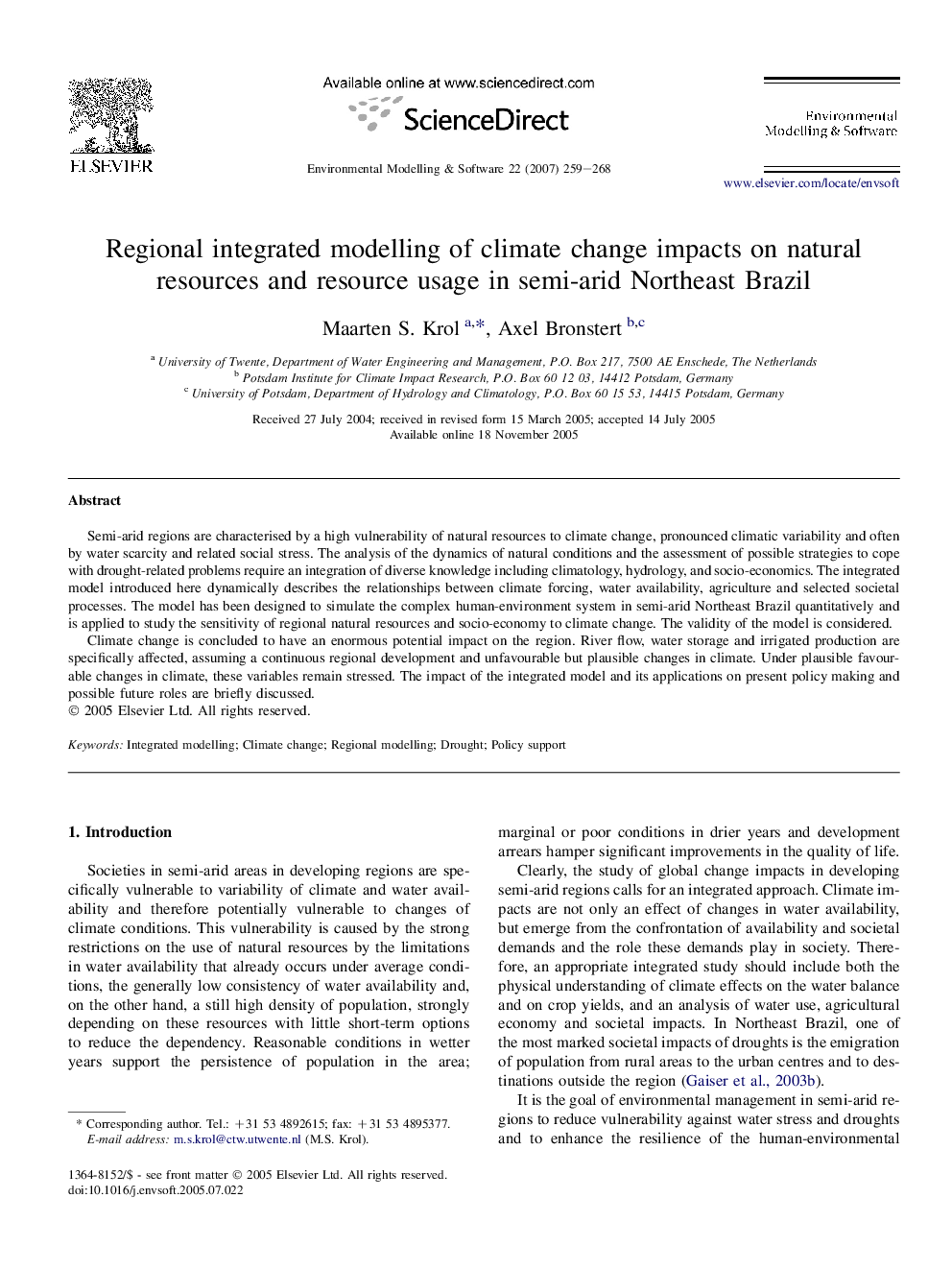| Article ID | Journal | Published Year | Pages | File Type |
|---|---|---|---|---|
| 569160 | Environmental Modelling & Software | 2007 | 10 Pages |
Semi-arid regions are characterised by a high vulnerability of natural resources to climate change, pronounced climatic variability and often by water scarcity and related social stress. The analysis of the dynamics of natural conditions and the assessment of possible strategies to cope with drought-related problems require an integration of diverse knowledge including climatology, hydrology, and socio-economics. The integrated model introduced here dynamically describes the relationships between climate forcing, water availability, agriculture and selected societal processes. The model has been designed to simulate the complex human-environment system in semi-arid Northeast Brazil quantitatively and is applied to study the sensitivity of regional natural resources and socio-economy to climate change. The validity of the model is considered.Climate change is concluded to have an enormous potential impact on the region. River flow, water storage and irrigated production are specifically affected, assuming a continuous regional development and unfavourable but plausible changes in climate. Under plausible favourable changes in climate, these variables remain stressed. The impact of the integrated model and its applications on present policy making and possible future roles are briefly discussed.
